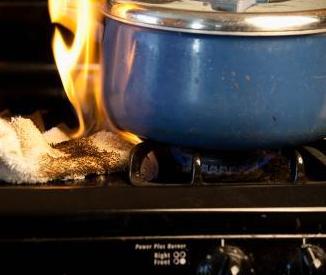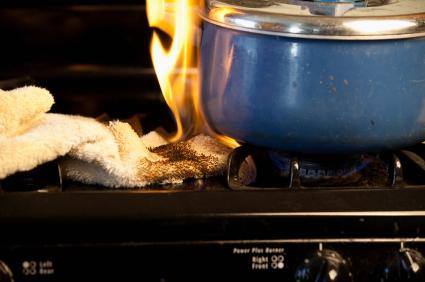 Whether it’s a boiling over deep fryer or a damaged electrical cord, cooking-related fires remain a top cause of unexpected blazes in the home.
Whether it’s a boiling over deep fryer or a damaged electrical cord, cooking-related fires remain a top cause of unexpected blazes in the home.
According to a recent report from the National Fire Protection Association, U.S. fire departments responded to an average of 371,700 home structure fires annually between 2006 and 2010.
These fires caused an estimated average of 2,590 civilian deaths and $7.2 billion in direct property damage each year.
Based on research by the Consumer Product Safety Commission, the NFPA reports that cooking was the number one cause of both reported and unreported home structure fires. CPSC found that in 2004-2005, for every household cooking fire reported to the fire department, U.S. households experienced 50 cooking equipment fires they did not report.
Forty-two percent of reported home fires started in the kitchen or cooking area. These fires were the third leading cause of home fire deaths (15 percent) and leading cause of home fire injuries (37 percent).
Other notable findings from the report include:
Almost two-thirds of home fire deaths resulted from fires in properties without working smoke alarms.
Smoking materials are the leading cause of home fire deaths followed by heating equipment and then cooking equipment.
One-quarter (25 percent) of all home fire deaths were caused by fires that started in the bedroom; another quarter (24 percent) resulted from fires originating in the living room, family room, or den.
Half of all home fire deaths result from incidents reported overnight between 11:00 p.m. and 7:00 a.m.
Home fires accounted for three-quarters (73 percent) of all reported structure fires between 2006 and 2010.
Between 2006 and 2010, on average one of every 310 households per year had a reported home fire.
Home structure fires peaked around the dinner hours between 5:00 and 8:00 p.m.
Estimates are based on data from the U.S. Fire Administration’s National Fire Incident Reporting System and the NFPA’s annual fire department experience survey.
The NFPA has these suggestions for staying safe in the home:
Watch the cooking
Stay in the kitchen when frying, grilling or broiling food. If you must leave, even for a short time, turn off the stove.
Give space heaters space
Keep fixed and portable space heaters at least three feet from anything that can burn. Turn off heaters when leaving a room or going to sleep.
Smoke outside
Ask smokers to smoke outside. Have sturdy, deep ashtrays for smokers.
Keep matches and lighters out of reach
Keep them up high, out of the reach of children, preferably in a locked cabinet.
Inspect electrical cords
Replace cords that are cracked, damaged, have broken plugs, or have loose connections.
Be careful when using candles
Keep candles at least one foot from anything that can burn. Blow out candles when leaving the room or before going to sleep.
Have a home fire escape plan
Make a home fire escape plan and practice it at least twice a year.
Install smoke alarms
Install smoke alarms on every level of the home, inside bedrooms and outside sleeping areas. Interconnect smoke alarms throughout the home so when one sounds, they all sound.
Test smoke alarms
Test smoke alarms at least once a month and replace conventional batteries once a year or when the alarm “chirps” to indicate the battery is low. Replace any smoke alarm that is more than 10 years old.
Install sprinklers
If you are building or remodeling a home, install residential fire sprinklers. Sprinklers can contain and may even extinguish a fire in less time than it would take the fire department to arrive.












